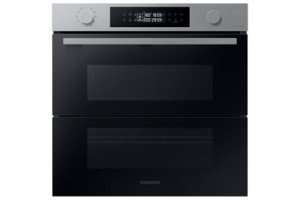The Comprehensive Guide to Built-In Ovens: Features, Benefits, and FAQs
Built-in ovens are a popular choice for modern-day cooking areas, offering versatility, effectiveness, and a sleek design that incorporates seamlessly into cabinets. This short article will dive into the different elements of built-in ovens, including their features, benefits, setup alternatives, upkeep pointers, and responses to frequently asked concerns.
What is a Built-In Oven?
A built-in oven is designed to be installed within kitchen cabinetry and is offered in different setups, such as single or double ovens. Unlike freestanding ovens, built-in models provide a streamlined appearance and offer more versatility in kitchen style. They come in electric, gas, and steam alternatives, dealing with a variety of cooking choices.
Features of Built-In Ovens
Built-in ovens are packed with features that improve cooking experiences. Here are some of the most typical features to consider:
| Feature | Description |
|---|---|
| Self-Cleaning | Numerous models include a self-cleaning function that burns off residue at high temperatures, streamlining upkeep. |
| Convection Cooking | This function uses a fan to circulate hot air, cooking food more evenly and rapidly. |
| Smart Technology | Some ovens come geared up with Wi-Fi connection, enabling users to manage the oven from another location by means of mobile phone. |
| Numerous Cooking Modes | Include alternatives such as baking, broiling, roasting, and air frying, providing flexibility for different meals. |
| Temperature Probe | Monitors the internal temperature of food, ensuring completely cooked meals each time. |
| Smooth Design Options | Offered in different finishes (stainless steel, black, white) to match kitchen design. |
Benefits of Built-In Ovens
The installation of a built-in oven brings numerous benefits to any kitchen:
- Space Efficiency: Built-in ovens optimize kitchen space, offering a clean and orderly look without compromising performance.
- Boosted Cooking Performance: With advanced features like convection cooking and precise temperature level controls, built-in ovens frequently outshine standard models.
- Style Flexibility: These ovens can be installed at eye level, permitting easy gain access to without flexing down, which can be specifically advantageous for people with physical restrictions.
- Enhanced Resale Value: A well-designed kitchen with premium built-in appliances might appeal to prospective purchasers, boosting general home value.
- Customization Options: Many brand names provide adjustable designs that fit the specific measurements and aesthetic of specific kitchens.
Installation Options
When picking a built-in oven, comprehending the setup choices is important. Here are the most typical configurations:
- Single Built-In Oven: Ideal for smaller kitchens, these systems offer sufficient space to prepare a range of dishes simultaneously, perfect for everyday cooking.
- Double Built-In Oven: Best fit for avid cooks and large households, double ovens enable synchronised cooking at 2 different temperatures, ideal for meals that need varied cooking methods.
- Mix Steam and Oven: A hybrid service that integrates the advantages of standard baking with steam cooking. This alternative is exceptional for keeping moisture in foods, making it perfect for baking bread or roasting meats.
Maintenance Tips for Built-In Ovens
Keeping a built-in oven is essential for its longevity and optimal performance. Here are some practical maintenance suggestions:
- Regular Cleaning: Use the self-cleaning function when required, and wipe down the exterior and interior surface areas routinely to avoid grease buildup.
- Inspect the Seals: Inspect the oven door seals for any wear or damage to guarantee correct insulation and cooking performance.
- Temperature level Calibration: Occasionally test the temperature accuracy using an oven thermometer, specifically if cooking times seem longer than normal.
- Ventilation: Ensure sufficient ventilation around the oven to avoid overheating, especially for built-in models that may be surrounded by kitchen cabinetry.
FAQs About Built-In Ovens
1. Are built-in ovens more costly than freestanding models?Yes, built-in ovens tend to be more costly due to their style, installation requirements, and extra functions. Nevertheless, their benefits can validate the cost in the long run.
2. Can you install a built-in oven yourself?While some useful individuals may attempt to install a built-in oven, it is advised to hire a professional to guarantee proper setup, ventilation, and security requirements.
3. What is the typical life-span of a built-in oven?The common life expectancy of a built-in oven is around 10 to 15 years, depending on use and upkeep. Regular care can help extend its durability.
4. Are built-in ovens energy efficient?Numerous contemporary built-in ovens are created with energy performance in mind, incorporating features like insulation and precise temperature controls that may lower energy intake compared to older models.
5. Can a built-in oven be repaired if it breaks?Yes, built-in ovens can often be fixed. It is advisable to call a certified technician for diagnoses and repairs to make sure safety and compliance with service warranty agreements.
Built-in ovens are an exceptional addition to any modern-day kitchen, providing a combination of design, functionality, and advanced cooking features. With integrated electric oven and hob about their functions, benefits, and maintenance, homeowners can make informed choices to enhance their culinary experiences. As kitchen design patterns continue to progress, the built-in oven stays a staple for those looking to mix aesthetics with efficiency in their cooking areas.

